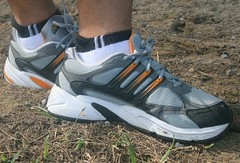Characteristics of white blood cells:
- Colourless
- Irregular in shape
- Contains nucleus
- Contains no haemoglobin
- Larger in size than red blood cells
- Fewer in number than red blood cells
- The ratio of red to white blood cells is 700:1
There are two main kinds of white blood cells
- Lymphocytes
- Phagocytes
LYMPHOCYTES
- Produced by the lymph glands or the lymph nodes.
- Has large rounded nucleus with small amount of non-granular cytoplasm.
- Nearly round in shape.
- Show limited movement.
- Function: to produce antibodies which fight against micro-organisms other than bacteria (mainly viruses).
A Lymphocyte

PHAGOCYTES
- Produced by the bone marrow.
- Has lobed nucleus with granular cytoplasm.
- Irregular shape.
- Able to move.
- Function: to fight against foreign particles (mainly bacteria) by means of phagocytosis.
A Phagocyte

The following figure shows phagocytosis. In phagocytosis, first the phagocyte moves with the help of its pseudopodia towards the foreign particles (bacteria). Upon reaching the foreign particles, it will then engulf the foreign particles by surrounding them using the pseudopodia. A vacuole is formed as a result. Digestive enzyme is then secreted into the vacuole which digests the foreign particles. The products of digestion is then absorbed into the cytoplasm and when the phagocyte died, pus will be formed at the infected area.

